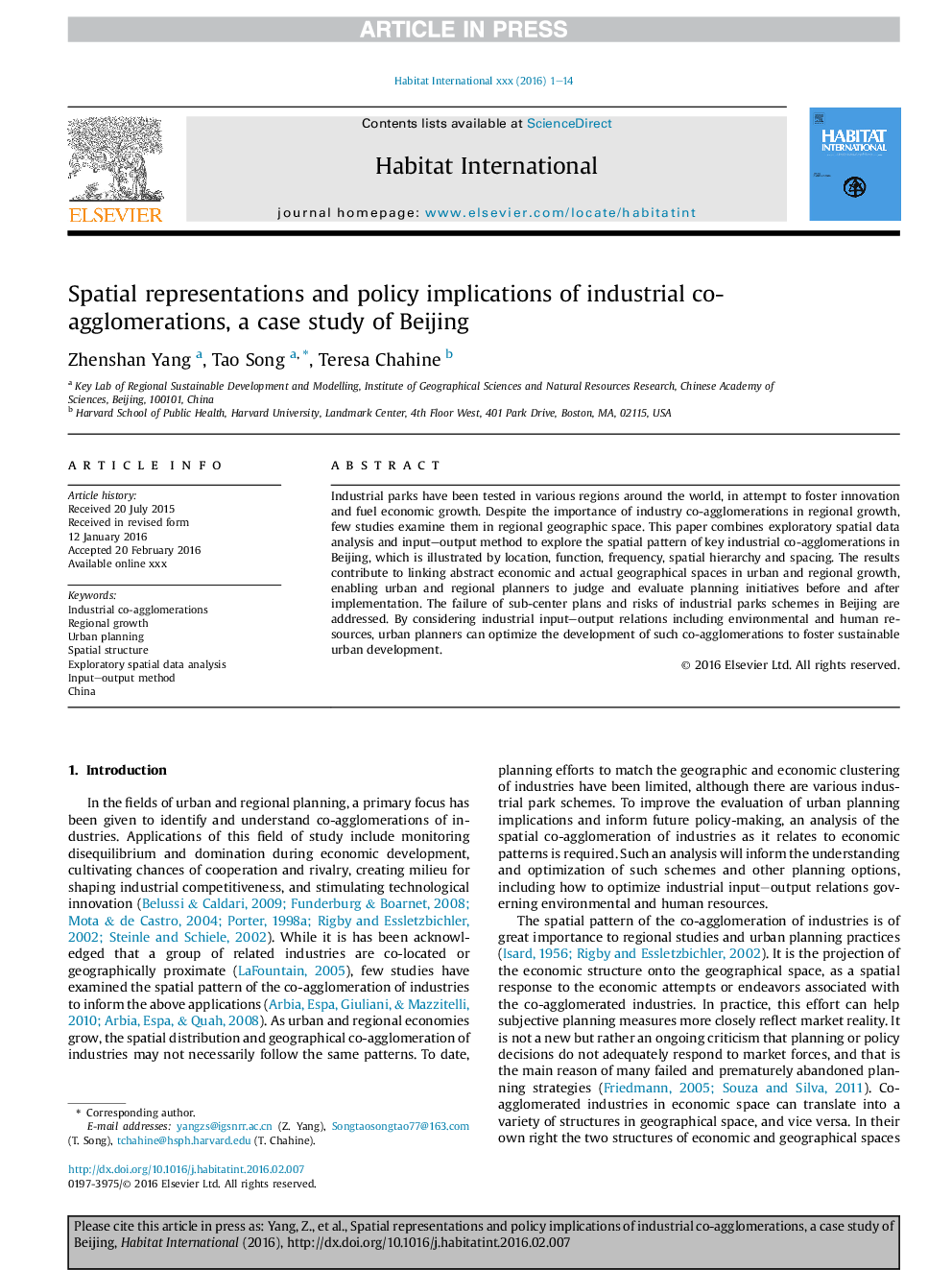| Article ID | Journal | Published Year | Pages | File Type |
|---|---|---|---|---|
| 7455428 | Habitat International | 2016 | 14 Pages |
Abstract
Industrial parks have been tested in various regions around the world, in attempt to foster innovation and fuel economic growth. Despite the importance of industry co-agglomerations in regional growth, few studies examine them in regional geographic space. This paper combines exploratory spatial data analysis and input-output method to explore the spatial pattern of key industrial co-agglomerations in Beijing, which is illustrated by location, function, frequency, spatial hierarchy and spacing. The results contribute to linking abstract economic and actual geographical spaces in urban and regional growth, enabling urban and regional planners to judge and evaluate planning initiatives before and after implementation. The failure of sub-center plans and risks of industrial parks schemes in Beijing are addressed. By considering industrial input-output relations including environmental and human resources, urban planners can optimize the development of such co-agglomerations to foster sustainable urban development.
Keywords
Related Topics
Social Sciences and Humanities
Social Sciences
Development
Authors
Zhenshan Yang, Tao Song, Teresa Chahine,
